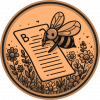Pytorch-Wildlife V1.1.0
Hello everyone, we are happy to announce our release of Pytorch-Wildlife V1.1.0. In this release we have many new features including MegaDetectorV6, HerdNet, and more:
MegaDetectorV6 is finally out
After a few months of public beta testing, we are finally ready to officially release our 6th version of MegaDetector, MegaDetectorV6! In the next generation of MegaDetector, we are focusing on computational efficiency, performance, mordernizing of model architectures, and licensing. We have trained multiple new models using different model architectures, including Yolo-v9, Yolo-v11, and RT-Detr for maximum user flexibility. We have a rolling release schedule for different versions of MegaDetectorV6, and in the first step, we are releasing the compact version of MegaDetectorV6 with Yolo-v9 (MDv6-ultralytics-yolov9-compact, MDv6-c in short). From now on, we encourage our users to use MegaDetectorV6 as their default animal detection model.
This MDv6-c model is optimized for performance and low-budget devices. It has only one-sixth (SMALLER) of the parameters of the previous MegaDetectorV5 and exhibits 12% higher recall (BETTER) on animal detection in our validation datasets. In other words, MDv6-c has significantly fewer false negatives when detecting animals, making it a more robust animal detection model than MegaDetectorV5. Furthermore, one of our testers reported that the speed of MDv6-c is at least 5 times FASTER than MegaDetectorV5 on their datasets.
Learn how to use MegaDetectorV6 in our image demo and video demo.
HerdNet in Pytorch-Wildlife
We have incorporated a point-based overhead animal detection model into our model zoo called HerdNet (Delplanque et al. 2022). Two model weights are incorporated in this release, HerdNet-general (their default weights) and HerdNet-ennedi (their model trained on Ennedi 2019 datasets). More details can be found here and in their original repo. This is the first third-party model in Pytorch-Wildlife and the foundation of our expansion to overhead/aerial animal detection and classification. Please see our HerdNet demo on how to use it!
Customed Weights
You can now load custom weights you fine-tuned on your own datasets using the finetuning module directly in the Pytorch-Wildlife pipeline! Please see the demo on how to do it. You can also load it in our Gradio app!
Folder Separation
You can now automatically separate your image detections into folders based on detection results! Please see our folder separation demo on how to do it. You can also test it in our Gradio demo!
Simplified Batch Detection!
We have also simplified the batch detection pipeline. Now we do not need to define pytorch datasets and dataloaders specifically.
Previous:
tgt_folder_path = os.path.join(".","demo_data","imgs")
dataset = pw_data.DetectionImageFolder(
tgt_folder_path,
transform=pw_trans.MegaDetector_v5_Transform(target_size=detection_model.IMAGE_SIZE,
stride=detection_model.STRIDE),
extension='JPG'
loader = DataLoader(dataset, batch_size=32, shuffle=False,
pin_memory=True, num_workers=0, drop_last=False)
results = detection_model.batch_image_detection(loader)
Now:
tgt_folder_path = os.path.join(".","demo_data","imgs")
results = detection_model.batch_image_detection(tgt_folder_path, batch_size=16)Fixes and other updates:
- Issues #523, #524 and #526 have been solved!
- PyTorchWildlife is now compatible with Supervision 0.23+ and Python 3.10+!
- CUDA 12.x compatibility.
10 November 2024 11:47pm
Hey @zhongqimiao,
Thank you for your team's work! I've been going through the repo and it seems this work is most focused on data from camera traps (i.e., imagery or video). However, there's mention in the repo that this can be used for bioacoustic data, and was curious if you have a pointer to any results, tutorials, or demos for that.
Specifically, I'm most interested in models that only use bioacoustic data.
Current related work that I'm working on:
Overview ‹ BuzzCam — MIT Media Lab
Protecting biodiversity with acoustic and visual sensing.The South American Bombus dahlbomii is one of the largest bee species in the world. It can grow up to …
Overview ‹ CollarID — MIT Media Lab
Global biodiversity faces threats from climate change and human disturbance, which affect many species, especially large predators. These threats influence the…
Thanks!
Patrick
11 November 2024 6:54am
Hey @zhongqimiao!
Thanks to you and your team's effort.
We will definitely try the new model in our system! We have tested previous MD models on aerial imagery from drones, and it had some success, but really curious to see how HerdNet works.
Also, 12% increased recall with 5x inference time boost - wow, sounds too good!












Patrick Chwalek